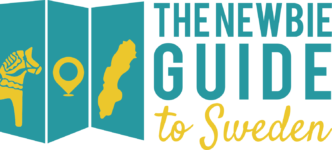This article contains sponsored links to our partner Buttericks, Sweden’s oldest party and costume specialty store. Halloween and All Saints’ Day are both celebrated in Sweden, let’s look at the differences. Halloween – a spooky tradition that now haunts Sweden alongside the rest of the world, and All Saints Day – a day of remembrance […]
Swedish Culture
Typical Swedish habits
Typical Swedish habits are quite useful to know – even if you don’t adapt them. Living in a new country brings its own excitement and challenges. The first years are usually dubbed as the honeymoon phase. This is the moment when everything seems so bright, fresh and exciting. Written by Hayu Hamemayu Then soon, things […]
The Sweden recycle guide: Waste Sorting and Disposal
The Sweden recycle guide is your friend, trust me. Recycling in Sweden is a common practice in Sweden. However, it may come as a culture shock to a newbie. You will notice that the bins at your home, office, school, or even on the walkway have different labels. As a result, you may find it […]
10 Swedish words to know in the office
Why do you need to learn Swedish words for the office? Well, are you looking for a job in Sweden? Or, are you already working in a Swedish office? In that case, just knowing 10 simple words or phrases in Swedish might make all the difference for your experience in a Swedish workplace. Rebecca from […]
What is it really like to work in Sweden?
A couple of weeks back we conducted a poll asking the Newbie community, ‘How different is the business behaviour or work culture in Sweden compared to that of your home country?’ And 90% of our readers voted: ‘Very different’. No wonder then, that for a newbie in Sweden, feeling at home at work doesn’t come […]
A one way ticket to Sverige!! Daring to live a life I’d only dreamed of…
Written by Suzy Greaves “The world is too big to stay in one place. Life is too short to do just one thing.” I love to hear about people’s journeys, their life choices, the paths they take and the stories they make. Well; I’m Suzy, welcome to my story and my Swedish life. It’s […]
Why Studying in Sweden is Beyond My Expectations
Written by Hamzah Dzikri Fadliansyah In the middle of uncertainty, fate decided that I would study in Sweden, a country that was not my top priority. I could tell you my rollercoaster story of applying for a master’s degree program, but this could be a very long story to tell. Fret not! I will tell […]
What’s ‘Christmas in Sweden’ without a julbord!
Julbord – one thing you can not miss out on if you’re looking to soak in Christmas celebrations in Sweden. Literally translated to ‘Christmas table’, the julbord is a buffet of traditional Swedish eats, and a window into the land’s culture, habit, craving and identity. Written by our content writer, Nidhi Dhingra The Swedish julbord […]
3 ways to increase your job opportunities in Sweden and integrate into society
Written by Chia May Congratulations! So you’re moving to Sweden 🙂 and you have a million questions on your mind. Here 3 ways to increase your job opportunities in Sweden and integrate into the Swedish society. After 2 years of discussing and planning, I finally received my residence permit card. My mind went into a […]
Minority groups in Sweden
Written by Silvia Lopez If you think about the population in Sweden, you probably first think about the Swedes. But, did you know that there are also five official minority groups in Sweden? These groups are: the Sámi, the Swedish Finns, the Tornedalers, the Roma and the Jews. In this article I will present them […]
Bringing Sweden Home
Written by William Mansell Scandinavian design, what images do you get? Many people around the world turn to Sweden & Scandinavia when it comes to design, and it’s clear to see why. As a designer, I am constantly inspired when creating interiors. Here are some tips for ‘bringing Sweden home’ & making your home extra Swedish, […]
Popular Cafés in Malmö
Written by Marlene Laun You probably have heard the word “Fika” before. No? Let me explain it to you. Fika means “little coffee break” and the Swedes love it. It is so important that even some businesses have two timeslots a day that are reserved for Fika. But who would not love to have a […]
